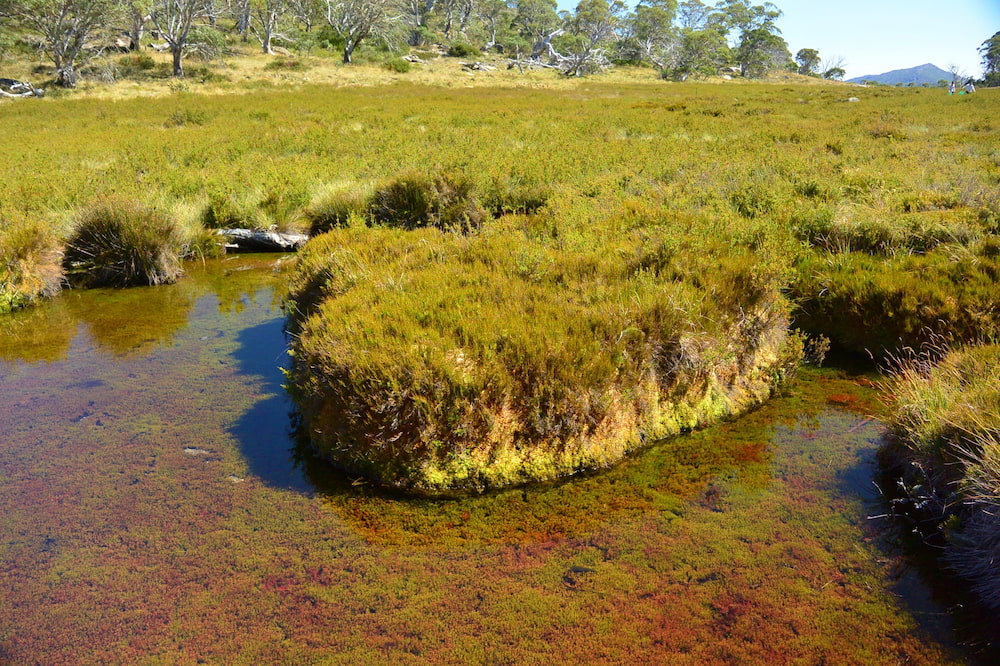The ACT Government has released a new action plan to protect, manage, and improve bog and fen wetland ecosystems in the ACT, after six species that live in them were uplisted to endangered or critically endangered last week.
The High Country Bogs and Associated Fens Ecological Community Action Plan is prepared by the Conservator of Flora and Fauna under the Nature Conservation Act.
ACT High Country Bogs and Associated Fens were listed as an Endangered Ecological Community in the ACT in 2019. The wetlands are defined by an underlying layer of peat that often hosts critical Sphagnum moss species.
The Action Plan outlines known threats to the ecological community and the recommended management actions for the next decade. Its objective is to support the conservation of ACT bogs and fens into the future, including maintaining and improving natural ecological and evolutionary processes that occur within the ecological community.
“In the ACT, bogs and fens are listed as endangered, which is why we already undertake targeted and specific conservation action to ensure their survival,” Rebecca Vassarotti, ACT Minister for the Environment, Parks and Land Management, said.
“Now this action plan takes us one step further, giving us an opportunity to provide even more targeted support, co-ordinated across areas of the ACT Government, to bog and fen wetland ecosystems.
“Not only are these wetlands home to many unique plants and animals, but they also help store carbon. That means saving bogs and fens is important not only for protecting our environment, but also for fighting climate change.”
Most bogs and fens in the ACT occur within Namadgi National Park. Bogs and fens provide critical refuge and habitat for endemic and threatened animal species, including the northern corroboree frog (Pseudophryne pengilleyi), the broad-toothed rat (Mastacomys fuscus mordicus), and Verreaux’s alpine tree frog (Litoria verreauxii alpina).
“Last week, based on the advice of our expert ecologists, I had to make the regrettable decision to uplist the status of six native species that live in our bogs and fens,” Ms Vassarotti said.
“These species, which rely on bog and fen wetlands to thrive, have all been uplisted to either endangered or critically endangered as the destruction of their habitat continues under climate change.
“Some of the species that we’ve had to uplist include flowers like the dwarf violet, and native animals like the broad-toothed rat whose main habitat is in these threatened areas.”
Ms Vassarotti said the new action plan would put efforts towards the preservation of threatened native species in alpine wetland ecosystems.
“Many people might not have heard of bogs and fens, but they are vital wetland ecosystems that support some of our most vulnerable native species,” Ms Vassarotti said.
“With the implementation of a dedicated action plan for these wetlands, we can more effectively address critical threats to these species through comprehensive long-term monitoring, robust protection, and strategic management of their unique habitat.”
Bogs and fens also protect water quality in the ACT’s water catchment, by filtering the water that flows into the Lower Cotter Catchment area.
The ACT Government is working with university experts, the National Seed Bank, the Australian National Botanical Gardens, and the local Ngunnawal community to improve these ecosystems.
Dr Ben Keaney, from the Australian National University’s Institute of Climate Energy and Disaster Solutions, welcomed the publication of the plan.
“The High Country Bogs and Associated Fens Ecological Community Action Plan is timely and gives a template for conservation of peatlands in the ACT into the future,” he said.
“Wetlands are an integral part of the natural environment, providing much of the drinking water for Canberra, and are key habitat for several threatened and endangered species. They are large carbon sinks, and are important to the traditional custodians of the area.
“There are several threats to bogs and fens in the ACT such as fire, climate change and invasive species. Land managers require clear guidelines, and to be empowered to react swiftly where damage to peatlands is recorded.”



